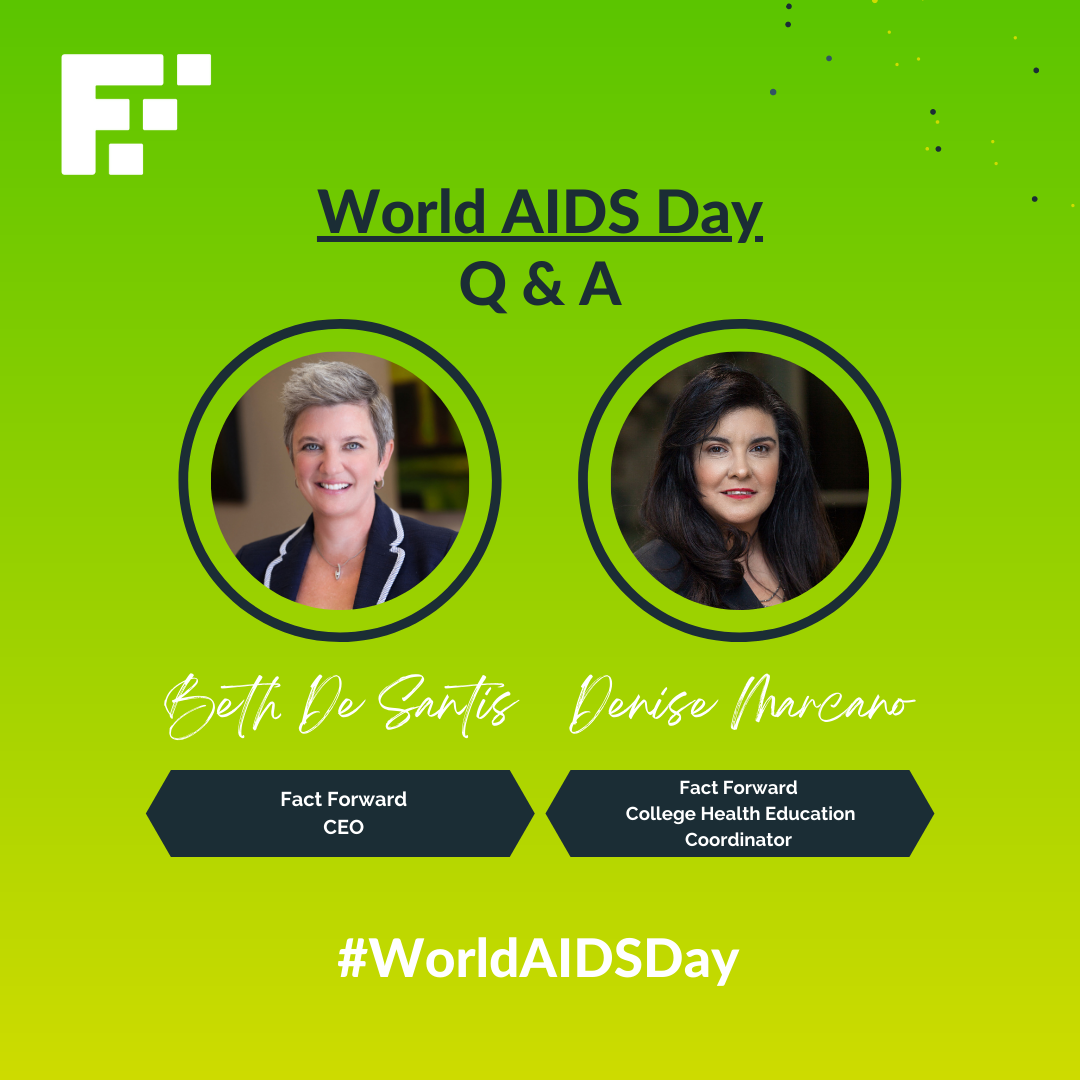World AIDS Day is TODAY
 World AIDS Day was first observed in 1988. Each year, organizations and individuals across the world bring attention to the HIV epidemic, endeavor to increase HIV awareness and knowledge, speak out against HIV stigma, and call for an increased response to move toward Ending the HIV Epidemic in the U.S..
World AIDS Day was first observed in 1988. Each year, organizations and individuals across the world bring attention to the HIV epidemic, endeavor to increase HIV awareness and knowledge, speak out against HIV stigma, and call for an increased response to move toward Ending the HIV Epidemic in the U.S..
The theme for the 2021 observance is “Ending the HIV Epidemic: Equitable Access, Everyone’s Voice” (“El tema de este año para WAD se confirma como: Poner fin a la epidemia de VIH: acceso equitativo, la voz de todos”).
To honor this important day, Fact Forward's Capacity Building Coordinator Denise Marcano sat down with CEO Beth De Santis for a Q&A about how HIV/AIDS impacts our work and our communities.
Denise: Beth, thank you for sitting down with me for some open and honest dialogue. The theme for 2021 World AIDS Day is: Ending the HIV Epidemic: Equitable Access, Everyone’s Voice. How do you think this relates Fact Forward’s work?
Beth: Thanks for leading this important conversation. I love the 2021 theme, and I feel it definitely relates to our work. It has always been a goal of Fact Forward’s to increase consistent and correct condom use as well as encourage comprehensive sex education.
There’s no way these goals can be met by working alone; throughout the years we’ve worked with countless organizations to promote evidence-based programs, access to low cost/equitable clinical services, and increased parent-child communication. We also have a staff member that is part of the South Carolina HIV Planning Council and who is collaborating with agencies to make all those things happen. We continue to work on these issues while addressing the racial disparities with access and the systems in place that cause these disparities .
Denise: Let’s continue our discussion by talking about the new data that has come out since the last World AIDS Day. What does it look like for South Carolinians?
Beth: We just got our hands on this data and are excited to share some of the major takeaways. A few key data points are:
- Since 1991, SC’s teen birth rate has declined by 73%. This is huge, but young people are still at substantial risk for contracting STIs
- Only 49% of SC’s teens used a condom at last sex
- Regarding HIV/AIDS specifically, 25% of new diagnosed cases in SC were among adolescents (15-24).
Denise: Those numbers are illuminating. In response to them, how can youth-serving professionals or parents support young people with avoiding and/or managing STIs?
Beth: Young people want to hear from the trusted-adults in their lives – being that person is crucial to ensuring your adolescent doesn’t learn about STIs, sex, or relationships from peers and the internet alone.
Parents and youth-serving professionals can support adolescents by guarding themselves with medically accurate information and remaining open to non-shaming conversations.
Denise: Excellent tips. I would also add that it is important for adults, parents and youth serving professional alike to share with our youth where they can go and seek testing and treatment if needed. Let them know it is confidential and free at many local locations throughout the state. Lastly, let’s dig deeper into the work professionals and community organizations can do to support adolescents. What does this look like?
Beth: Young people face unique factors that put them at risk for contracting STIs. There are a few ways that youth-supporting organizations and people can help adolescents
- Know/have access to adolescent-friendly health care: community health centers and condom access points are especially important ways to help adolescents get needed reproductive health services
- Encourage proper reproductive health screenings: Many adolescents, especially young women, do not receive the chlamydia screening the CDC recommends.
- Understand young people’s rights to their privacy: Adolescents are often reluctant to disclose risk behaviors to doctors. Confidentiality concerns can definitely be a barrier for young people as it relates to preventing STDs/HIV and pregnancy
- Promote having a plan to keep themselves safe: Having multiple partners increases the risk of contracting an STD/STI. Promote using clinics, condoms, and protection as a part of their plan to stay safe and healthy
Denise: Thank you so much for this open conversation about HIV/AIDS. As we mentioned in our discussion, there are numerous organizations that have resources to offer surrounding HIV/AIDS care and prevention. You can follow HIV.gov and the #WorldAIDSDay hashtag to stay up-to-date with the latest information. Also, don’t forget to share about #WorldAIDSDay on your platforms to increase awareness.